Enjoy the centuries-old art of Ikebana during a hands-on workshop in Hyogo, Japan. Under the guidance of a local expert, you’ll learn the intricate principles and techniques that give rise to harmonious floral compositions. From selecting the flowers and foliage to arranging them with practiced precision, this interactive experience allows you to tap into the philosophy that infuses each creation with personal meaning. With an appreciation for Japanese traditions and a newfound skill, you’ll leave this workshop with a deeper connection to the natural world.
Key Points
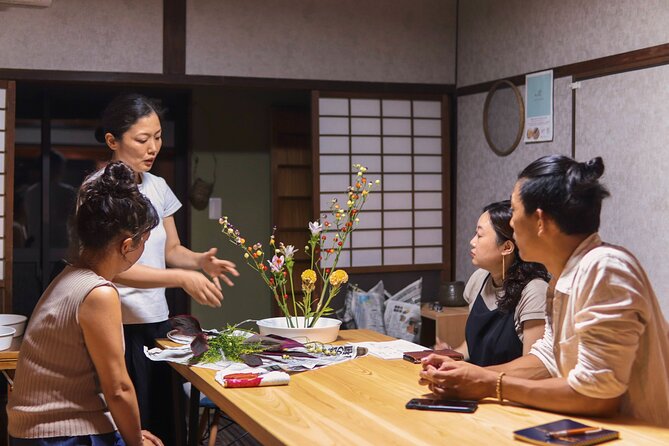
-
Learn the ancient art of Ikebana from a local expert in Hyogo, Japan, exploring the principles of asymmetry, balance, and harmony through hands-on flower arranging.
-
Carefully select and position natural elements like flowers, branches, and leaves to create visually striking and harmonious Ikebana compositions.
-
Discover the distinctive styles and techniques of the three primary Ikebana schools: Ikenobo, Ohara, and Sogetsu, and experiment with your own creative interpretation.
-
Engage in the meditative practice of Ikebana, connecting with the natural world and finding beauty in the imperfect and fleeting forms of nature.
-
Complement the Ikebana experience with the enjoyment of fragrant Japanese green tea and delectable traditional sweets in a serene setting.
Ikebana Basics and Traditions
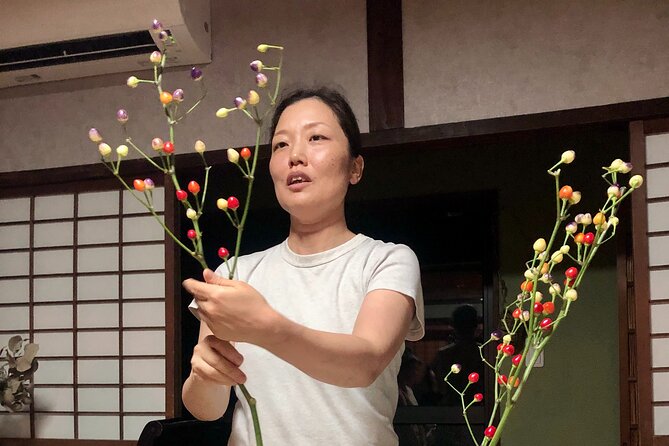
Ikebana, Japan’s ancient art of flower arranging, embodies a deep reverence for nature and the principles of asymmetry, balance, and harmony.
Dating back to the 6th century, this revered practice emphasizes the elegant minimalism of each composition. Rather than simply arranging blooms, Ikebana practitioners thoughtfully select and position each stem, leaf, and flower to create visually striking yet serene displays.
The three main Ikebana schools – Ikenobo, Ohara, and Sogetsu – each have their own distinctive styles and techniques.
Whether crafting a simple tabletop display or an elaborate wall hanging, Ikebana encourages practitioners to connect with the natural world and find beauty in its imperfect, fleeting forms.
Here are more great tours and experiences we've reviewed in Kobe
Selecting Flowers and Foliage
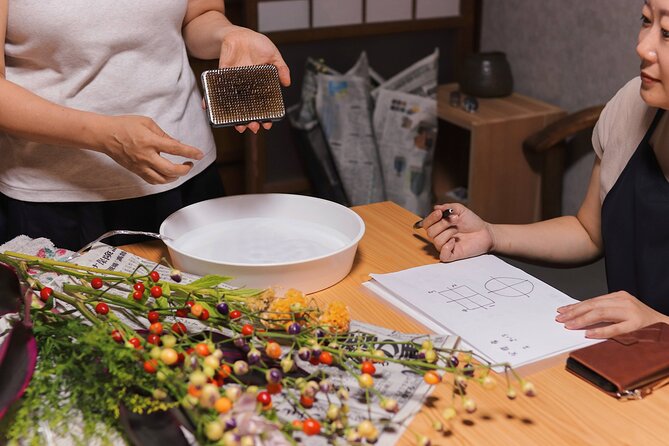
Thoughtful selection of flowers and foliage is essential for creating captivating Ikebana arrangements. The choice of materials reflects the artist’s sensitivity to the natural world, as each stem, leaf, and bloom is deliberately incorporated to evoke a specific mood or theme.
Participants in the Hyogo workshop will learn how to carefully consider the unique characteristics of different plant materials and how they can be combined to achieve harmonious compositions. Factors like color, texture, shape, and seasonal significance all come into play as the Ikebana expert guides attendees through the process of selecting the perfect elements for their floral creations.
Arranging the Ikebana Composition
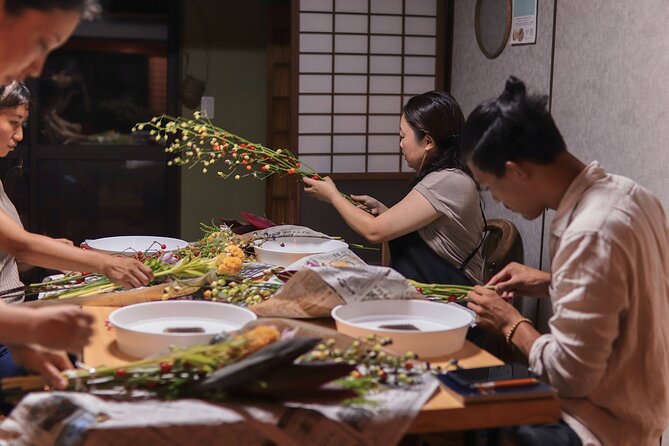
After selecting the appropriate flowers and foliage, you will learn the art of arranging the Ikebana composition.
With guidance from the local expert, they’ll delicately position each stem and leaf to create a visually striking and harmonious arrangement. Paying close attention to the angles, heights, and overall balance of the composition, attendees will bring their chosen materials together in a captivating display of the Ikebana tradition.
The expert will demonstrate the proper techniques, emphasizing the importance of minimalism and the careful consideration of negative space. Participants will have the opportunity to practice these skills firsthand, experimenting with different arrangements and receiving feedback to refine their compositions.
The hands-on nature of this activity allows everyone to fully enjoy the beauty and discipline of Ikebana.
Techniques for Balance and Harmony
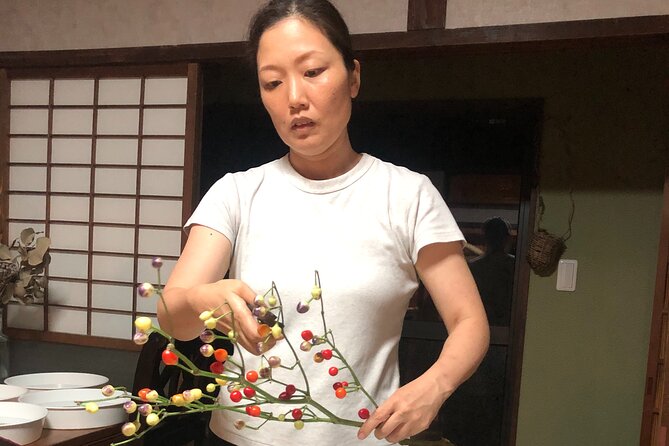
The skilled Ikebana expert guides participants in harnessing techniques that foster balance and harmony within their floral arrangements. By teaching the principles of asymmetry, empty space, and line, the expert empowers each person to create a visually striking and emotionally resonant composition.
| Technique | Purpose | Example |
|---|---|---|
| Asymmetry | Avoids rigid, static arrangements | Placing taller stems on one side, shorter on the other |
| Empty Space | Draws the eye and enhances the focal point | Leaving open areas between stems and flowers |
| Line | Guides the viewer’s gaze through the piece | Arranging elements in a graceful, fluid line |
These fundamental techniques enable the participants to craft Ikebana masterpieces that capture the natural beauty and tranquility of the art form.
The Significance of Ikebana Styles
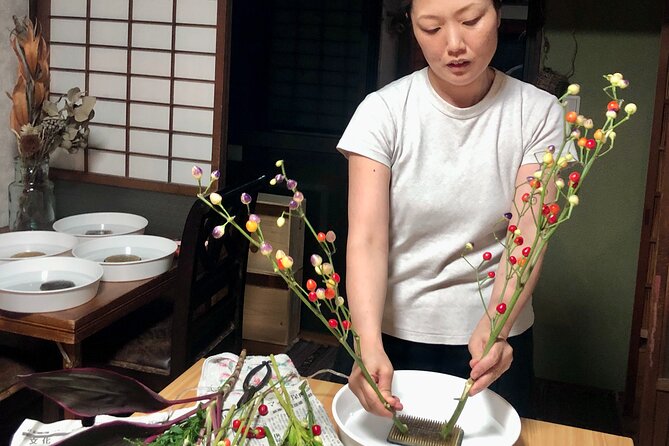
Ikebana features various distinct styles, each with its own cultural significance and artistic expression.
The three primary schools – Ikenobō, Ohara, and Sōgetsu – embody unique philosophies that shape the arrangements and inspire practitioners.
Ikenobō emphasizes asymmetry and minimalism, reflecting the Zen Buddhist principles of emptiness and tranquility.
Ohara embraces a more naturalistic approach, drawing inspiration from the seasonal changes in the natural world.
Sōgetsu, the most contemporary school, explores innovative techniques and materials, pushing the boundaries of traditional ikebana.
These diverse styles allow ikebana artists to express their individual creativity while preserving the deep-rooted traditions of this ancient Japanese art form.
Personalizing Your Ikebana Creation
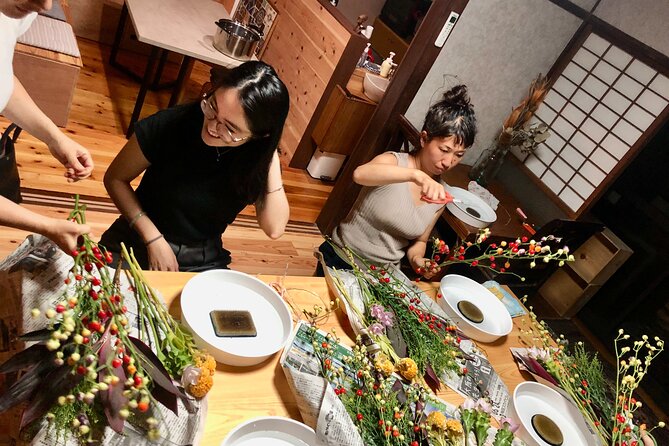
As participants engage in the hands-on ikebana session, they’ll have the opportunity to infuse their arrangements with personal touches, reflecting their unique artistic vision. Under the guidance of the local expert, they’ll carefully select the flowers, branches, and other natural elements that speak to their individual style and preferences. The expert will share insights on how to creatively position and balance the components, encouraging experimentation and self-expression.
| Personalization | Process | Outcome |
|---|---|---|
| Choice of materials | Arrangement | Unique creation |
| Placement of elements | Guidance | Artistic expression |
| Interpretation of theme | Experimentation | Personal touch |
Through this hands-on experience, you will not only learn the fundamental principles of ikebana but also develop a deeper appreciation for the art form’s ability to capture one’s unique perspective.
Enjoying Japanese Refreshments
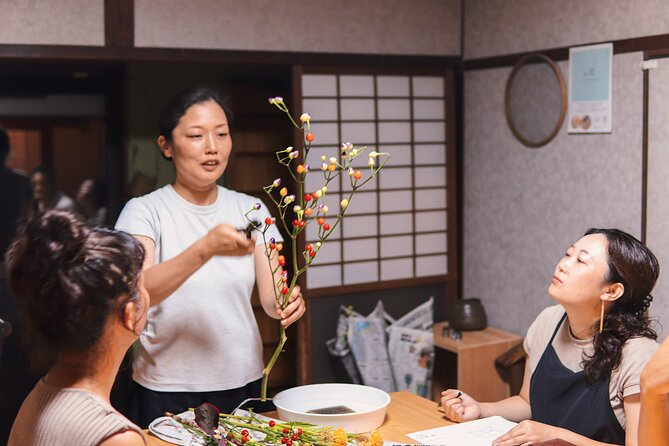
After the hands-on ikebana session, participants can unwind and enjoy a selection of traditional Japanese refreshments. These include fragrant green tea, as well as delectable Japanese sweets that complement the artistry of the floral arrangements they’ve created.
The experience offers a chance to savor the flavors and textures of these time-honored treats:
- Matcha green tea, a revered beverage with a smooth, umami-rich taste.
- Wagashi, exquisite confections made with seasonal ingredients and thoughtful attention to detail.
- Mochi, soft and chewy rice cakes that provide a satisfying contrast to the delicate ikebana pieces.
This culture allows participants to fully appreciate the holistic experience of ikebana, from the creative process to the final moment of peaceful contemplation.
Meeting Point and Transportation
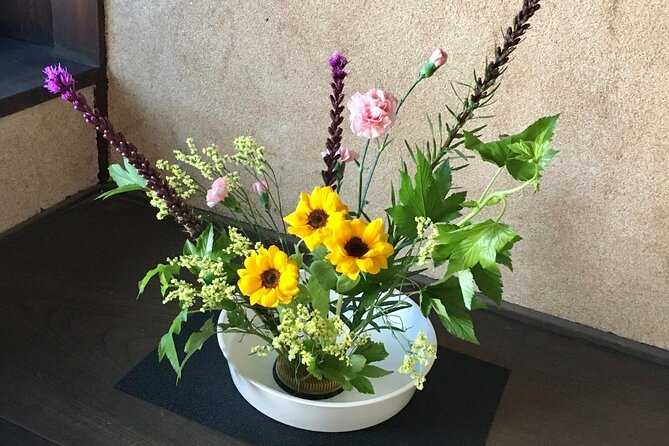
The activity’s meeting point is at the International Sharehouse VISTA, located in the Hyogo Ward of Kobe, Japan. Participants can find the sharehouse near the Ishiibashi bus stop on Kobe City bus line #7.
To help participants plan their trip, here are the key details about the meeting point and transportation:
| Detail | Information |
|---|---|
| Address | 1-chōme-5-12 Sannōchō, Hyogo Ward, Kobe, Hyogo 652-0011, Japan |
| Nearest Bus Stop | Ishiibashi (石井橋) of Kobe City bus line #7 |
| Accessibility | Near public transportation, not wheelchair accessible, stroller accessible |
| Other Details | Confirmation received at booking, service animals allowed, most travelers can participate |
The activity is conveniently located and easily accessible by public transportation, making it a great option for those exploring Kobe.
Frequently Asked Questions
Can I Take My Ikebana Creation Home?
Yes, participants can take their ikebana creations home after the activity. The experience includes all the necessary materials and guidance from a local expert, allowing guests to bring their unique arrangements back with them.
What Should I Wear for the Activity?
For the activity, guests should wear comfortable, casual clothing that allows them to easily sit on the tatami mats. Avoid anything too formal or restrictive. Dress in layers as the workshop location may have varying temperatures.
Is There a Restroom Available at the Venue?
The venue provides a restroom for participants. Restroom facilities are available at the meeting point, the International Sharehouse VISTA, where the activity takes place. Guests can easily access the restroom during the hands-on experience.
Can I Take Photos During the Experience?
Yes, participants can take photos during the experience. The activity details note that most travelers are able to participate, allowing them to capture moments of the traditional Japanese flower arranging lesson with a local expert.
Is the Instructor Fluent in English?
The instructor is fluent in English, allowing participants to fully engage in the hands-on Ikebana experience. This ensures clear communication and understanding throughout the activity, enhancing the overall learning experience.
Recap
Immersing oneself in the art of Ikebana allows participants to connect with centuries-old traditions and principles.
Under the guidance of a local expert, they’ll learn to create visually striking, harmonious compositions that capture the beauty of the natural world.
This hands-on experience fosters a deeper appreciation for Ikebana’s ability to infuse one’s personal touch into each creation.
Participants can then enjoy Japanese refreshments, leaving with a newfound understanding of this time-honored practice.
More Workshops & Classes in Kobe
More Tour Reviews in Kobe
- Kobes Harmony: Mountains, Sea, and the Serenity of Arima Onsen
- 1 Day Trip to Awaji Island From Kobe With Akiko
- Kobe: Private Highlights Tour in 3 Hours
- Kobe: Takenaka Carpentry Tools Museum With an Expert Guide
- Kobe: Kampai Sake Tasting and Walking Tour
- Kobe Port, Kitano, Arima Onsen & Mount Rokko Night Tour
Not for you? Here's more things to do in Kobe we have recnetly reviewed
- 2 Best Dining Experiences In Kobe
- 2 Best Dinner Tours In Kobe
- 7 Best Cruises And Boat Tours In Kobe
- 3 Best Lunch Experiences In Kobe
- 2 Best Food Tours In Kobe
- 5 Best Full-Day Tours In Kobe
- Kobe: Immerse Yourself in the History and Nature of Kobe
- Kobe Cruise Excursion: Private/Custom/City Meetup Possible
- Kobe: Guided Tour of Nunobiki Waterfalls and Herb Garden
- Kobe: Private Tour of Japan’s 3 Leading Sake Breweries in 3H
- Half-Day Private Guided City Tour of Kobe
- Mastering the Art of Sushi & Kobe Beef: A Hands-On Experience
